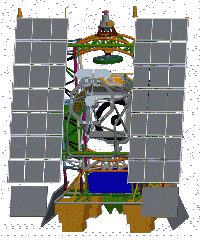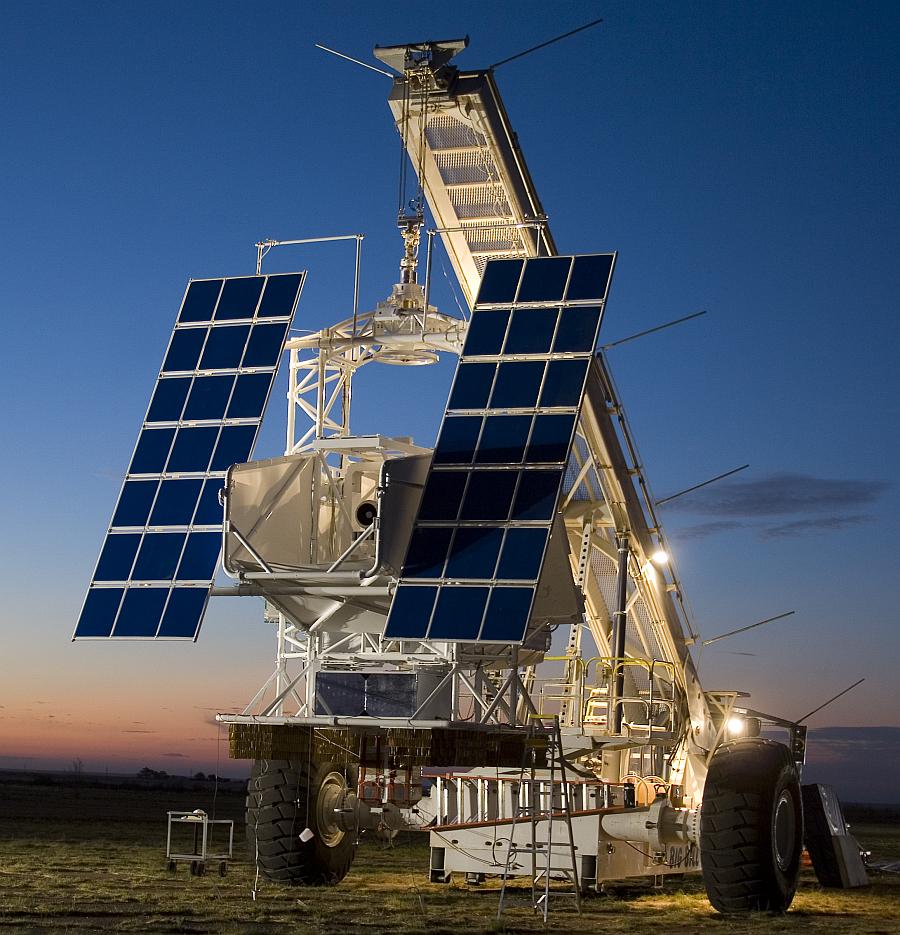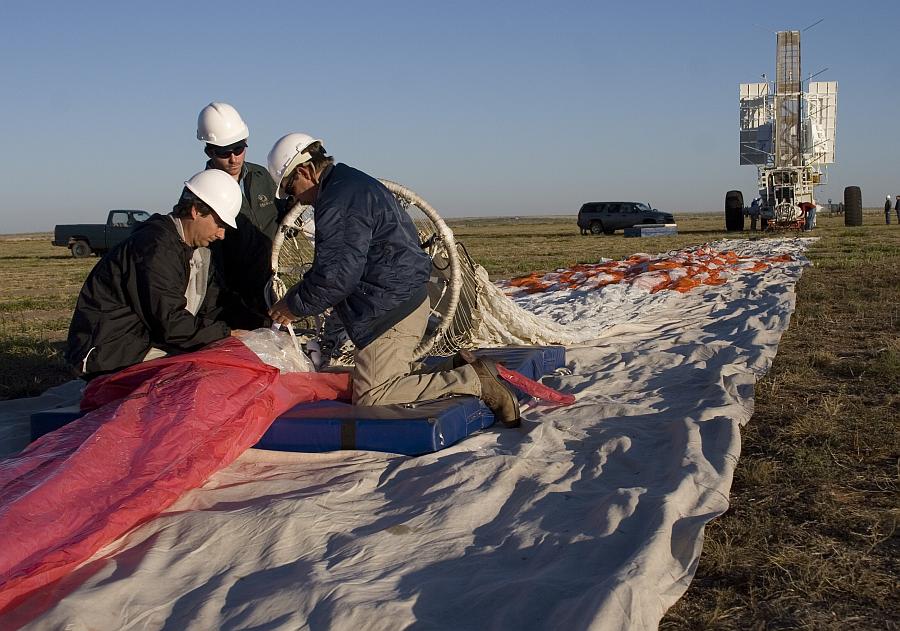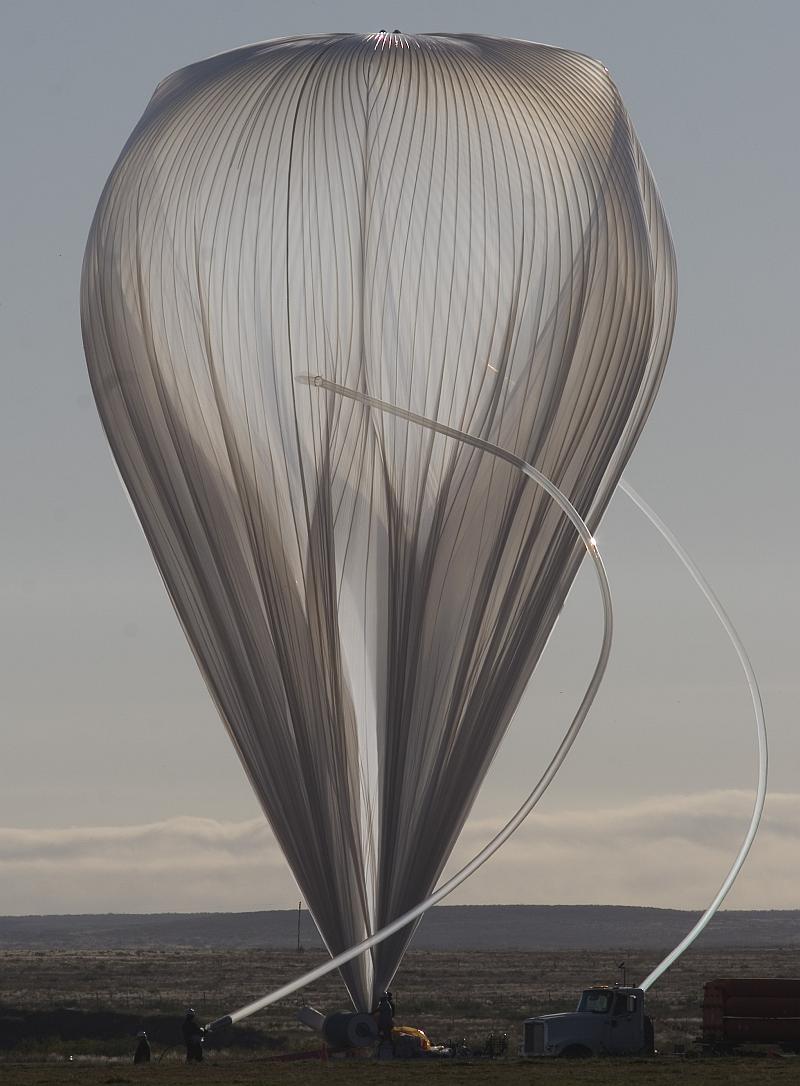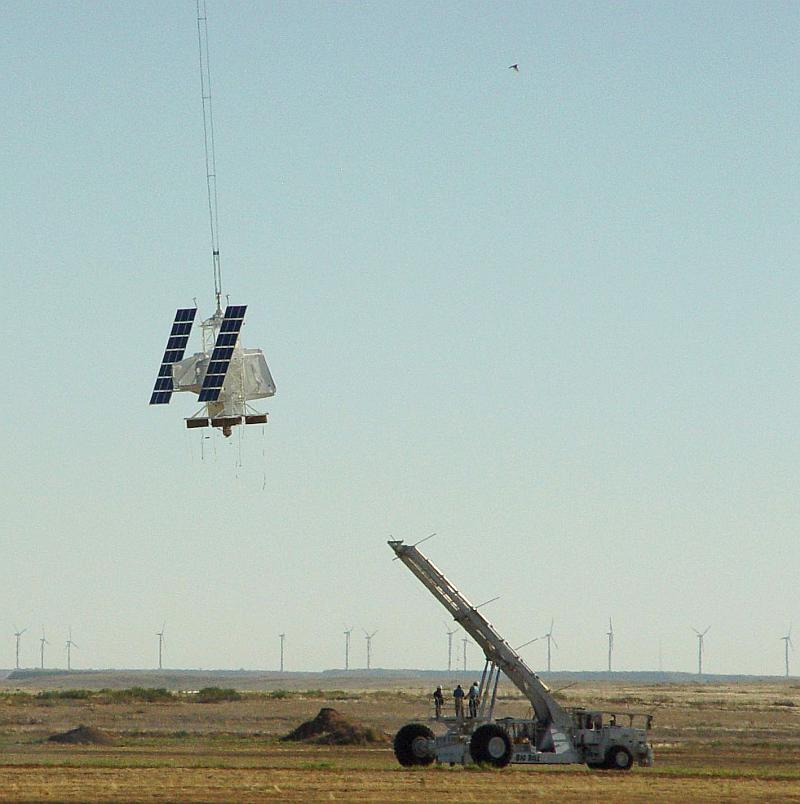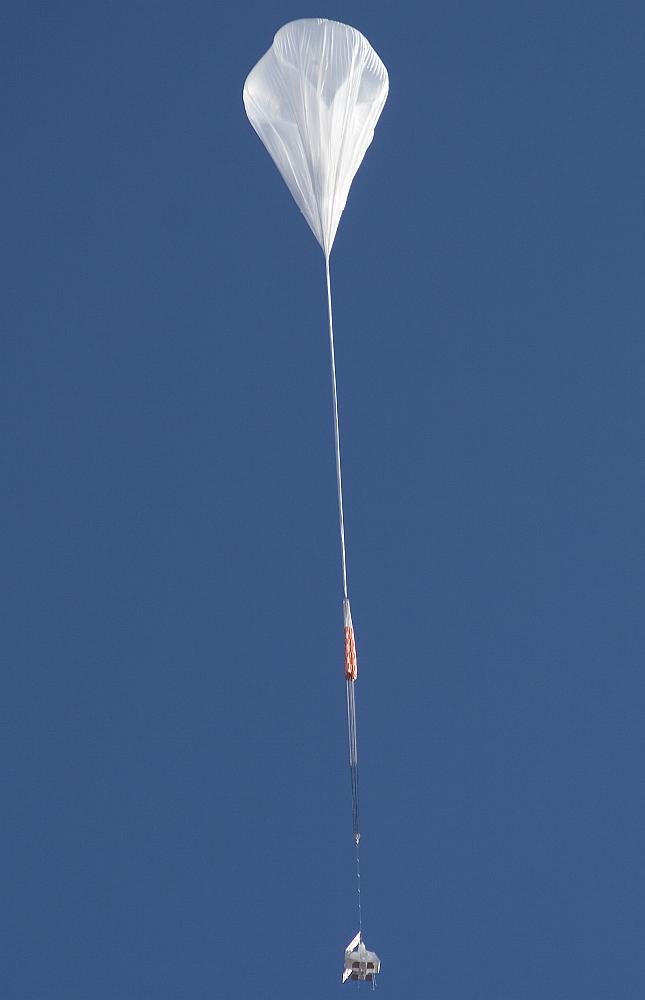Purpose of the flight and payload description
Sunrise is a light-weight solar telescope created to make spectro-polarimetric observations of the atmosphere of our Sun.
The instrumentation consists of a main telescope with an aperture of 1 m, feeding three focalplane instruments: the spectrograph-polarimeter, the filtergraph, and the magnetograph. The focal-plane package is mounted piggy-back on the telescope structure.
The central scientific aim of the instrument is to try to understand the structure and dynamics of the magnetic field in the solar atmosphere and the chromosphere as well to understand the physics of irradiance changes.
The main telescope has an aperture of 1 m and consists of a parabolic primary mirror with a focal length of 2.5 m and an elliptic secondary mirror thus providing a effective focal length near 25 m. It has a Gregorian configuration, with the primary image formed between the two mirrors.
The kind of observations to be done requires a very high spatial resolution down to 0.05 arcsec. and implies a substantial effort to accurately point and guide the telescope. In order to reach this goal, the pointing and guiding system works on two levels, first for solar pointing of gondola/telescope in azimuth by a torque motor drive as part of the momentum transfer unit (MTU) at the gondola support point, and second by precision guiding, and compensation of image motion.
Because of the large temperature differences between ground and flight conditions it is important to have reliable and accurate in-flight alignment capabilities. So a wavefront control system was developed, that is capable of detecting low-order modes of wavefront deformations in the telescope. A wavefront sensor measures the actual state of the optical alignment and generates an appropriate error signal. A control system converts this error signal into actuation signals which are used to drive the position of the secondary mirror, and the tip-tilt mirror.
Let's see in detail the three instruments coupled to the telescope. First, the spectrograph-polarimeter (SP) combines high-resolution vector-polarimetry with a multi-line Echelle spectrograph in a modified Littrow configuration, simultaneously providing photospheric magnetic field measurements and diagnostic spectroscopy of photospheric and chromospheric lines.
Second, the filtergraph (FG) is realized as a multiwavelength slit-jaw camera of the spectrograph polarimeter. This allows both instruments to receive the full amount of light in all wavelengths. In addition, the image of the spectrograph entrance slit in the filtergrams allows a precise identification of the region simultaneously observed with the SP. Three wavelengths each are chosen to sample the photosphere and the chromosphere.
Finally, The Imaging Magnetograph Experiment for Sunrise (IMaX) is an imaging vector magnetograph based upon narrow-band filters. The instrument provides fast-cadence two-dimensional maps of the complete magnetic vector and the line-of-sight velocity with high spatial resolution. IMaX images are taken in two narrow wavelength bands whose selection is made by a tunable system of Fabry-Perot etalons in a telecentric path. In this way, one ensures the homogeneity of the selected wavelength over the field of view.
The Sunrise telescope is mounted on the elevation axis to a gondola consisting of standard aluminium components. It is designed to withstand the vertical acceleration that is applied to the attachment rings when the parachute is opened near the termination of the flight. This structure and aeroflex shock absorbers protect the payload from the vertical and horizontal components of the landing shock load in case of landing in cross winds. The gondola can be moved in azimuthal direction to point the telescope and the solar panels towards the Sun. This is realized by means of a momentum transfer unit (MTU) mounted at the top of it, designed to minimize jitter in pointing stability.
During ascent, descent, and landing, the telescope is stowed horizontally, so that it is protected by the so called 'cradle'. The gondola is suspended from the main telescope frame and rotates with its structure while the telescope is being driven directly via the MTU.
Details of the balloon flight

Balloon launched on: 10/3/2007 at 15:00
Launch site: Scientific Flight Balloon Facility, Fort Sumner, (NM), US
Balloon launched by: Columbia Scientific Balloon Facility (CSBF)
Balloon manufacturer/size/composition: Zero Pressure Balloon
Flight identification number: 576N
End of flight (L for landing time, W for last contact, otherwise termination time): 9/3/2007 at 23:35
Balloon flight duration (F: time at float only, otherwise total flight time in d:days / h:hours or m:minutes - ): ~ 9 h
Landing site: Between the cities of Hartley and Dalhart, Texas, USA
The balloon was launched by dynamic method assisted by launch vehicle on October 3 at 15:00 UTC.
After a nominal ascent phase the balloon started to flight due north as can be seen in the map above (click to enlarge). Approaching the end of the flight the balloon turned eastward entering in the Texas territory.
After a total flight time of near 9 hours the balloon was terminated between the towns of Hartley and Dalhart. The gondola was recovered by CSBF personnel and returned to Fort Sumner the next day.
During this first engineering flight, a test version of the Sunrise telescope was used to avoid the possibility of damaging the one destined to fly in the first full-scale mission.
The gondola was equipped with the main computer (ICU), data storages and power distribution units, a small UV telescope with 25 cm aperture and a camera system with a filter wheel, verifying the pointing capabilities of the gondola. Fully powered by batteries, the gondola carried solar panel dummies, simulating the thermal behaviour and being representative in terms of size, mass, inertia and aerodynamics. Pointing, onboard data acquisition, commanding and downlink through telemetry systems were tested.
The test flight revealed the sensitivity of some of the electronic equipment when exposed to the severe environmental conditions around the tropopause. Low temperatures of less than -75ºC caused the ICU to temporarily stop working. The ICU recovered at float altitude and performed flawlessly during nominal flight operation. For the science flight -performed from Sweden to Canada in 2009- it was decided to modify the thermal design of the Sunrise instrument by implementing dedicated wind shields.
External references
- Another Sunrise website at MPAE Max Planck Institute for Solar System Research, Lindau
- Sunrise website at IAC (IMAX Instrument) Instituto de Astrofísica de Canarias
- Sunrise website at KIS Kiepenheuer-Institut für Sonnenphysik
- Sunrise website at MPE Max Planck Institute for Solar System Research, Lindau
- Erfolgreicher Testflug für das Ballonexperiment SUNRISE MPS press release (In German)
- Solar Telescope Reaches 120,000 Feet on Jumbo-Jet-Sized Balloon NCAR press release
- Study of horizontal flows in solar active regions based on high-resolution image reconstruction techniques PhD thesis 2008. Instituto de Astrofisica de Canarias
- Sunrise telescope scheme Kiepenheuer-Institut für Sonnenphysik
2705If you consider this website interesting or useful, you can help me to keep it up and running with a small donation to cover the operational costs. Just the equivalent of the price of a cup of coffee helps a lot.

